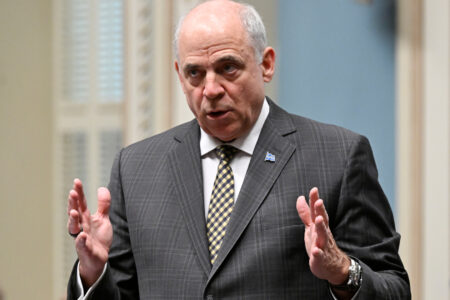
When it comes to organ donation rates, Canada does not perform particularly well, falling significantly behind countries like Spain, the UK, the US, France and Austria. This is a shortage with life-and-death implications given the approximately 4,500 patients on waiting lists for organs in Canada — with as many as 30 percent unlikely to ever receive one. And the gap between donations and need continues to grow.
The search for ways to counter this trend has spawned an array of research activities and policy proposals from the Canadian clinical and scientific community. (I am part of the new Canadian National Transplantation Research Program, an interdisciplinary team put together to, among things, explore way to increase the supply of organs.) And some provinces have implemented new transplantation initiatives, including the development of comprehensive organ donation registry systems.
But the most controversial approach to bridging the gap between organ supply and demand is the proposed use of incentives to increase donations. No province is yet contemplating leveraging the profit motive by offering a straight swap of cold cash for organs. But more subtle schemes that flirt with the concept have been suggested, such as providing living donors with a tax break in return for their organs, or paying funeral expenses for deceased donors. Some jurisdictions also have programs designed to reimburse individuals for the expenses associated with a living organ donation. Manitoba’s Living Organ Donor Reimbursement Program is among the programs aimed at increasing donation rates by removing “disincentives.”
Yet despite these worthwhile initiatives and ideas, the provincial organ donation laws that set rules governing donations are, by and large, an obstacle to developing the kinds of incentives that could open the process and save lives. All ban the use of incentives in a manner that is far more sweeping than we realize.
Most provincial laws use language similar to that found in British Columbia’s Human Tissue Gift Act, which states: “A person must not buy, sell or otherwise deal in, directly or indirectly, for a valuable consideration, any tissue for a transplant.”
This is a broad ban. In eyes of the law, just about anything can be considered “valuable consideration” so long as it bestows a benefit on the parties involved. It covers funeral expenses and tax breaks. Just getting access to an organ outside the usual channels — as is the case in paired exchange programs — could be viewed as valuable consideration. It might also be the case for getting preferential treatment on a waiting list, which is a strategy that has been effectively implemented in Israel, whereby people who register as organ donors get priority to an organ if needed.
It may also cover the emerging living donor reimbursement programs, even though they are hardly generous. Most programs set the reimbursement limit at around $5,000. Recent research by my colleague Scott Klarenbach at the University of Alberta’s Department of Medicine has found that for approximately a third of living donors, the financial cost of donation is greater than $5,000, particularly when incorporating the cost of lost home productivity.
The current “ban everything” approach to the regulation of organ donation would appear to be out of sync with public sentiment. A 2012 poll published in the Clinical Journal of the American Society of Nephrology found 71 percent of Canadians support the use of financial incentives to increase organ donation rates. And it found a remarkable 45 percent popular support for a policy of offering cash payment for organs.
This is not to ignore the ethical issues that arise over the use of incentives when it comes to asking people to part with vital body parts. I am not in favour of a system that turns organ donation into a for-profit enterprise. The use of incentives is controversial and strongly resisted by many in the transplant community (in the above-noted survey, only 14 percent of health professionals thought financial incentives were acceptable). Many are concerned, rightly or not, that a poorly devised incentive system runs an enormous risk of exploiting the most vulnerable and poorest members of our society.
But given the lives at stake, some kind of legislative re-thinking seems warranted. There are many other strategies that should and could be used to increase donation rates. In Croatia, efforts to restructure the entire process — from how organs are collected to how transplant teams are organized — have resulted in a significant increase in the supply of organs.
The rise of social media, particularly Facebook, offers an opportunity to increase awareness of organ needs by personalizing stories. A 2012 Facebook organ donation initiative that, among other things, allowed profile pages to highlight “organ donor” status resulted in a spike in the number of people registered to donate. The use of social networks also raises ethical questions: it is important to ensure that organ donation does not become a popularity contest over who can “sell” the most sympathetic story. But its power to subvert the existing organ allocation system creates another imperative to re-examine our current legislation.
Our current laws are looking antiquated. We need organ donation legislation that will allow innovative and ethically acceptable strategies to be tested and implemented. Ideally, our organ donation laws should be supported by good evidence and clear rationales. For example, we need to identify what harms the legislation is trying to stop (is it exploitation and will it really occur?), identify the appropriate regulatory tool (is a total ban needed?) and consider what the evidence tells us about the existence of the harms in the relevant context (will a closely regulated, domestic incentive system necessarily result in exploitation?). The justification for any regulation should also be conceptually consistent. Do we really want a law, for instance, that lumps all forms of “incentives” in the same ban-everything basket?
But the uncertainty surrounding the application of our existing laws, coupled with the evolving public perception about incentives, means it is time for an evidence-based discussion about what kind of legal framework Canada needs. The politics may be complicated and fraught with conflict. Fine. That’s what politics is for. Every organ brought into the system has the potential to have a significant impact on a patient’s health and well-being. We need to figure out how to do that.
Photo: Shutterstock by SewCream








